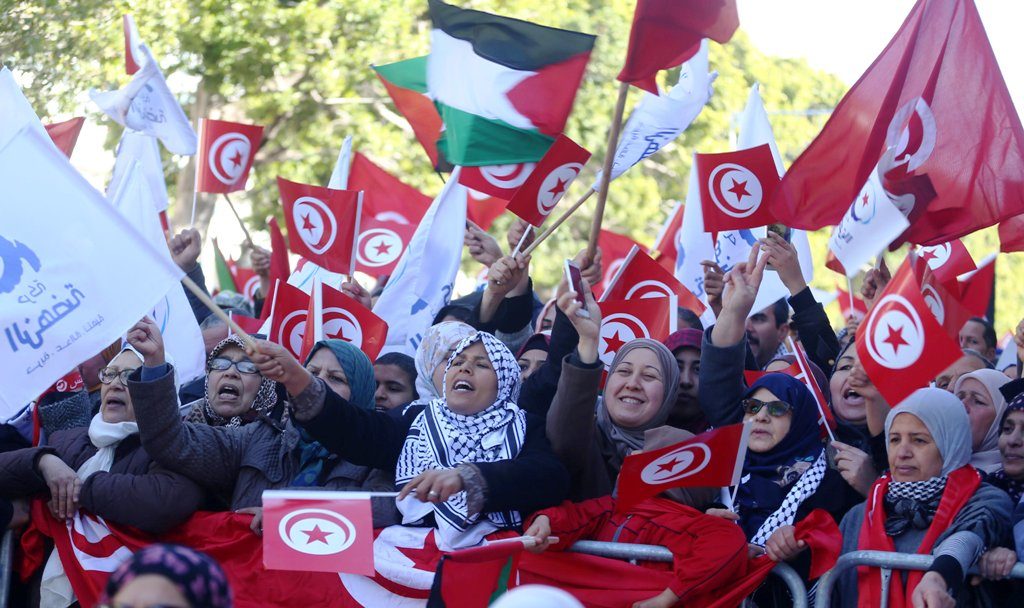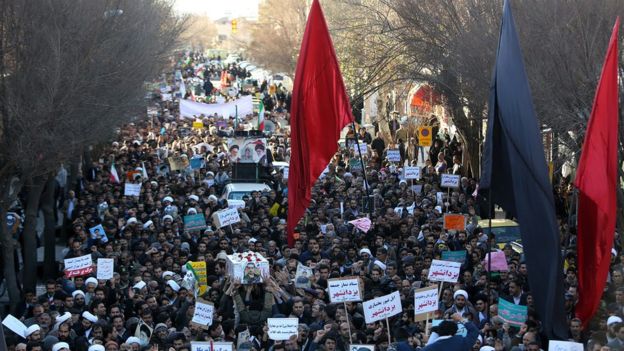Workers and youth rise against IMF-inspired austerity measures

Seven years after the Arab Spring, mass protests have rocked Iran and Tunisia in a new wave of struggle in the Middle East and North Africa region. This tide of resistance was ignited by austerity measures introduced by the governments of both countries, in line with policy “advise” from the IMF.
The protest movement in Iran started at the very end of last year. This was after some provisions of the government’s 2018 budget (usually kept secret) were leaked by some liberal “reformers”. They hoped to stir up limited protests that it could control and use to negotiate for more power from the “hardliners” in the Iranian state.
The leaked provisions revealed that, while billions of dollars would continue to be spent on government officials, the religious establishment and the military ($11bn, representing a 20% increase in spending), there would be sharp cuts in subsidies which benefit millions of poor people.
Within six days the protests had spread to dozens of cities, towns and the villages. Not even the killing of more than 20 people deterred the rising movement. The masses in revolt did not stop at economic demands for reversals of austerity measures for the poor and increased spending for the bosses and their institutions.
They boldly called for “death to the dictator!” – in reference to Ayatollah Khamenei, the Supreme Leader. Even the moderate “reformers” like President Rouhani who is suspected of leaking the budget details have not been spared as the protesters equally call for “death to Rouhani”!
This is a clear example of how working-class people learn from their movement for emancipation. Their struggles show that all sections of the bosses’ class are essentially the same – exploiters and oppressors of the poor masses.
For years, the provincial towns and villages in Iran have been considered strongholds of the conservative establishment. But working-class people in these places are now moving with the working-class in the big cities. Unlike the 2009 protest movement when workers in the cities played a subordinate role to the liberal bosses to challenge electoral fraud by the conservative bosses, the working-class now provides leadership to the mass of poor working people and youth, including the unemployed.
Workers are owed backlogs of salaries and privatisation has led to increasing unemployment, with half of the youths of working age being jobless. Spiralling inflation has rendered the wages of those that get paid almost useless. Independent trade unionism is repressed by the dictatorship and attacks on freedom of speech and freedom of expression have become the norm.

All these and more have made working-class people angry in Iran. They were fed-up with this deplorable situation and are fighting to change the situation.
Developments in Tunisia are similar. While working-class people enjoy greater democratic freedoms, especially since the 2011 Jasmine revolution, the cost of living has skyrocketed, real wages have dwindled and unemployment is rising.
As in Iran, the protest movement was sparked with the commencement of the implementation of the Tunisian government’s 2018 budget on January 1. New taxes were introduced resulting in increases in the prices of petrol, recharge cards and even vegetables and fruits.
The Tunisian General Labour Union (UGTT), the leading trade union federation, has called for an immediate increase in the minimum wage, currently $160 per month (N56,000). But, while rank and file workers welcome the call, they are not waiting for the trade union bureaucracy’s order to act. In a matter of days, the mass movement of working-class people and youth from below had spread across the country.
Radical and revolutionary parties united as the Popular Front threw in their support for this wildfire of popular anger. Like in Iran, the protesters did not just call for pro-poor people economic reforms that would reverse the Finance Act (budget). They are invoking a return of the revolutionary spirit with which they kicked out the Zine Al-Abidine Ben Ali dictatorship in 2011.
New protest groups such as Fesh Nestannew? (What Are We Waiting For?) have arisen, demanding “employment, freedom, and national dignity”, as the protesters marked the seventh anniversary of the Jasmine revolution on January 14.
Women also came to the fore, integrating the struggle for women’s rights as part of the democratic demands of the popular upsurge. They demanded that President Beji Caid Essebsi immediately carry out legal reforms to make Tunisia the first Muslim country where men and women will have equal rights of inheritance, contrary to the current manipulation of Islamic law by men which makes them get twice what women get from their parents’ inheritance.
The tide of protest appears to be ebbing in both countries, at least for now. The governments have bowed to the pressures of popular mass power, making promises to mitigate the economic burden they have saddled working-class people with. But there are lessons to be learnt as we await what might be even more severe storms ahead.
The steps taken by the governments in Tunisia and Iran are based on IMF’s anti-poor policy advice. As an international financial institution of the bosses’ class, IMF is concerned with making capitalism “work” for the rich. Indeed, capitalism is a system which thrives on the exploitation of working-class people and for the expansion of the bosses’ wealth (which we create) at our expense.
But, this system is not sustainable, and the global economic crisis which brutally demonstrates this is not abating anytime soon. We should thus expect more attacks on the poor masses, even if the bosses back off a little whenever we protest. Thus, we must go beyond protesting and relaxing after winning some concessions.
The only means to bring an end to the misery which capitalism generates for working-class people is to bring an end to capitalism. This needs generalisation of working-class consciousness and organisation. Mass movements of strikes and protests help to lay the foundations for these to emerge, failing which they dissipate, until once again ignited.
The lessons to be learnt are however not only general. The conditions of working-class people in Nigeria are terribly worse than those of workers and youths in either Iran or Tunisia. There is a pressing need for us to rouse from our slumber, unite and fight against the bosses in this country and in solidarity as one with working-class people in Iran, Tunisia and all over the world, against this demonic system of capitalism.
“What Are We Waiting For?”
by Yusuf LAWAL








